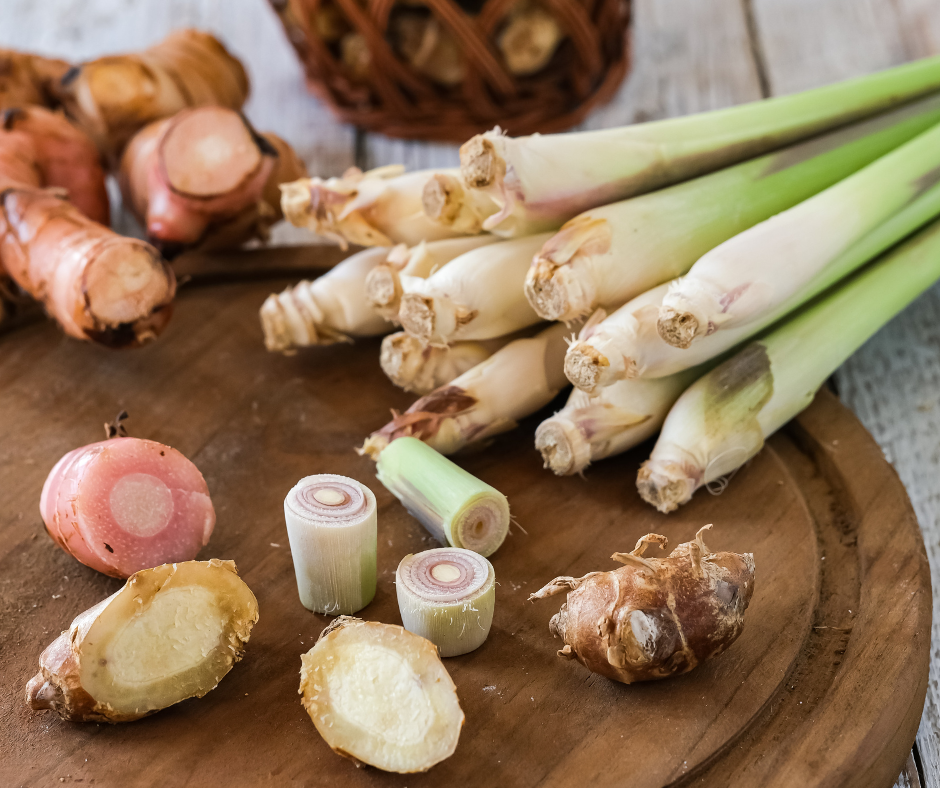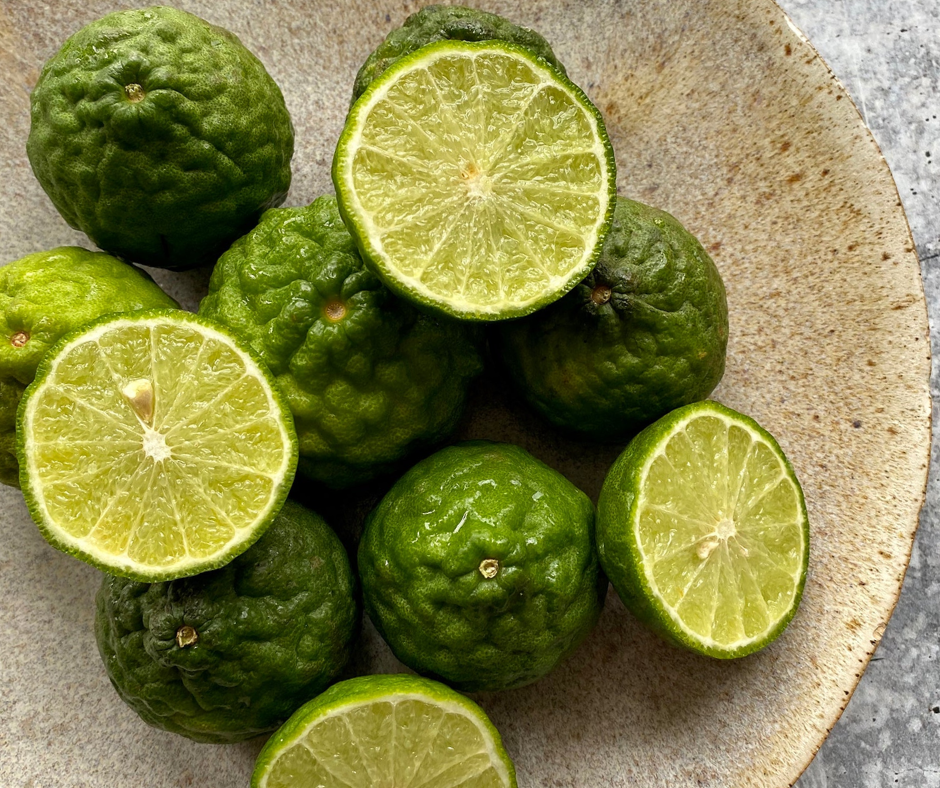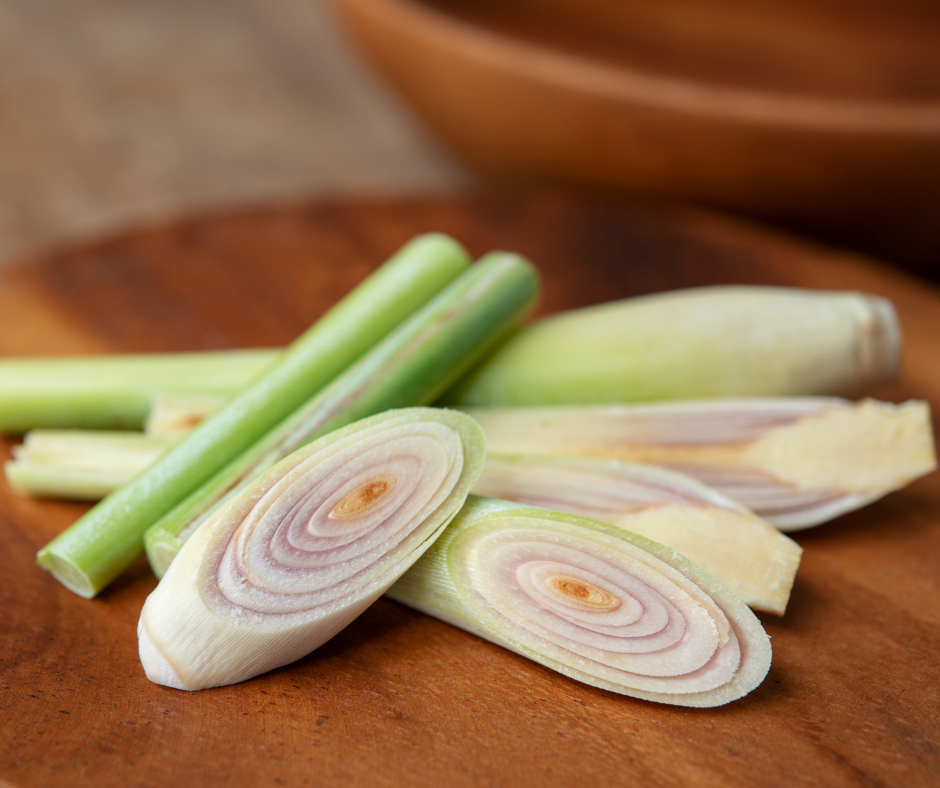Introduction
Explanation Of The Purpose Of The Article
The article explores the best Substitute for Lemon grass that one can use when no lemongrass is available. Lemongrass is a popular herb that adds a unique flavor profile to dishes, primarily in Southeast Asia. Its lemony zest and herbaceous aroma make it a go-to ingredient in many recipes. However, not having access to lemongrass can limit the complexity of flavors in a dish. Hence, this article suggests four substitutes that can replicate the contribution of lemongrass.
The Best Substitute for Lemon grass
There are some excellent substitutes for lemongrass, which can add a similar flavor to your dishes. Some of the best alternatives are:
Ginger
Ginger is an excellent substitute, primarily because of its lemony fragrance and taste. Fresh ginger can add a zingy and spicy flavor, just like lemongrass. It is an easy ingredient to find, and a little bit goes a long way.
Lime
Lime has a distinct acidic flavor that is bright and fresh. Its juice and zest can be added to dishes instead of lemongrass, especially in dishes that require a sharp and tangy flavor. Lime also works exceptionally well in refreshing drinks and teas.
Lemon Verbena
Lemon Verbena has a sweet and lemony flavor and is an excellent alternative to lemongrass. It’s also easier to find in some grocery stores than lemongrass. One thing to remember is to use it sparingly, as it can easily overpower the dish.
Kaffir Lime Leaves
Kaffir Lime Leaves are an excellent substitute for lemon grass because of their citrusy and floral aroma. They also have a similar shape, size, and texture, but the flavor profile is much stronger, so use them judiciously.
In conclusion, if you cannot get your hands on lemongrass, don’t worry. These substitutes offer unique flavor profiles that can elevate your dishes. So, whether it’s ginger, lime, lemon verbena, or kaffir lime leaves, each of these ingredients has unique properties that can add distinctive tastes and aromas to your dishes.
What Is Lemongrass?
Overview Of Lemongrass And Its Flavor Profile
Lemongrass is a popular herb commonly used in Southeast Asian cuisine to bring a unique flavor profile to dishes. This herb has a distinctly citrusy, herbal flavor with hints of ginger and adds complexity to dishes in a subtle and earthy way. Its fragrant aroma and sweet-sour taste have made it essential in many dishes, including stir-fries, curry pastes, and soup bases.
Lemongrass is also commonly used in teas and other beverages to bring a refreshing taste that accompanies the warmth of the tea. Its flavor blends delicate sweetness, sourness, and a woody, earthy aroma, making it an excellent complement to more intense flavors.
When cooking with lemongrass, it is essential to note that the fibrous part of the plant is not edible and should be removed before cooking. The softer parts should be used; they can be finely chopped or pounded into a paste and added to your recipe.
In summary, lemongrass adds a distinctly citrusy, herbal flavor to dishes, giving them a unique twist of freshness. Its complex, delicate taste and aroma make it an essential ingredient for Southeast Asian cuisine and a refreshing addition to teas and other beverages.
Best Substitute for Lemon grass
Lemon Zest And Quantity Equivalent To Lemongrass
If you find yourself without lemongrass, lemon zest is one of the best alternatives. Although not as potent, it has a similar citrusy flavor profile. For every stalk of lemongrass in your recipe, use 1/2 teaspoon of lemon zest.
Lime Zest And Quantity Equivalent To Lemongrass
Another alternative is using lime zest. It offers a slightly less intense flavor. As with lemon zest, use 1/2 teaspoon of lime zest for every lemongrass stalk in your recipe.
Lemon Verbena And Its Aroma And Taste Profile
Lemon verbena is a suitable substitute for lemon grass and has a lemony flavor that complements many dishes. For each lemongrass stalk, use 1 tablespoon of fresh lemon verbena leaves. It has a sweet, citrusy flavor with notes of spice and mint.
While any of the above substitutes can be used in a pinch, the best alternative is a combination. Try combining lemon zest with freshly grated ginger and cilantro for an easy-to-find alternative. The result is a well-rounded, aromatic profile that works well in most recipes.
In summary, lemongrass is an essential ingredient in Southeast Asian cuisine, providing a unique flavor profile that adds complexity and freshness to dishes. If you cannot find lemongrass, lemon zest, lime zest, and lemon verbena are suitable replacements. Adjust the quantity accordingly and consider combining some alternatives for a more well-rounded flavor.
Other Lemongrass Alternatives
For those who are looking for other substitutes for lemongrass, there are a few more options that can be considered. Here are a few more lemongrass alternatives you can try:
Kaffir Lime Leaves And Their Aroma And Taste Profile
Kaffir lime leaves are also known as Makrut lime leaves and are popularly used in Southeastern cuisines, especially in dishes from Thailand, Vietnam, and Cambodia. The leaves have a distinct citrusy flavor with hints of lemon and lime and a floral aroma. They are used in many dishes, such as curries, soups, and stir-fries. For every stalk of lemongrass in your recipe, use 2-3 kaffir lime leaves.
Thai Lime And Its Aroma And Taste Profile
Thai lime, also known as the Makrut lime or the Kieffer lime, has a distinct citrusy flavor. It has a bumpy exterior and is used in many Southeast Asian dishes like salads, curries, and soups. It has a unique aroma that is slightly sweet and a hint of bitterness. For every stalk of lemongrass in your recipe, use 1-2 Thai limes.
Remember that each of these ingredients can make a mouthwatering alternative to lemongrass. In some dishes, they may even prove preferable. These Substitutes for Lemon grass have unique properties that will help you add distinctive flavor profiles to your dishes. As a delicate herb, lemon balm doesn’t pack the same citrusy punch as some other lemongrass alternatives, but you can render its presence more powerful by chopping the leaves before adding them to your dishes. You will not need to remove the leaves or chopped leaves from your dish before serving it.
In summary, many suitable options can be a Substitute for Lemon grass, including lemon zest, lime zest, lemon verbena, kaffir lime leaves, and Thai limes. With all of these options, you can still achieve the same delicious flavor profile in your cooking, even if you cannot find lemongrass. Just remember to adjust the quantity according to your recipe and preferences.
Tips For Storing And Preparing Lemongrass
How To Properly Store And Chop Lemongrass
Lemongrass is a versatile ingredient that can uniquely flavor many dishes. However, it can be challenging to find fresh lemongrass, and store-bought lemongrass paste may not provide the same taste and aroma. Therefore, knowing how to prepare and store lemongrass properly is essential.
To store fresh lemongrass, it is recommended to trim the stalks and freeze them in a zip-top bag for up to three months. This method will retain most of the lemongrass’s flavor and make it easier to chop than fresh. For extra convenience, chop frozen lemongrass into small pieces before freezing, or prepare the lemongrass paste by adding one tablespoon of neutral oil and chopping it further.
If using fresh lemongrass, ensure it is stored in the fridge for several weeks. Longer storage is possible by chopping the stalks first and freezing them in freezer bags. Be sure to use frozen lemongrass within six months. Otherwise, you can dry lemongrass stalks and leaves by cutting them into small pieces and letting them dry.
Other Lemongrass Alternatives
Suppose you cannot find lemongrass or want to experiment with different ingredients. In that case, there are several lemongrass substitutes available that might work for your recipe. For example, Kaffir lime leaves have a distinct citrusy flavor with hints of lemon and lime and a floral aroma that is commonly used in Southeastern cuisines.
Similarly, Thai limes have a unique aroma that is slightly sweet and bitter. Thai limes are also commonly used in Southeast Asian dishes, such as salads, curries, and soups. Each ingredient can make a mouth-watering alternative to lemongrass with unique properties that can add distinctive flavor profiles to your dishes.
In conclusion, by properly storing and preparing lemongrass and knowing its substitutes, you can enhance your cooking and experiment with new flavors.
Delectable Flavor Pairings With Lemongrass
Flavor Combinations That Best Complement The Taste Of Lemongrass
Lemongrass is a versatile herb that can complement a variety of flavors, making it a fantastic ingredient to elevate your dishes. Here are some delectable flavor pairings to consider when cooking with lemongrass:
Basil: Lemongrass and basil can add depth and complexity to stir-fries and curries.
Chicken: The bright and citrusy flavor of lemongrass can balance out the richness of chicken dishes, like chicken curry or lemongrass chicken.
Chile Peppers: Combining chile peppers with lemongrass creates a perfect harmony of spicy and citrusy flavors. It’s perfect for enhancing the flavors of a seafood dish or a vegetarian stir-fry.
Cilantro: Both lemongrass and cilantro have distinctive but complementary flavors that can enhance the taste of soups or dips.
Cinnamon: Mixing lemongrass with cinnamon can create a warm and vibrant yet complex flavor for a comforting cup of tea or spiced dishes like curries.
Coconut: Coconut milk pairs perfectly with lemongrass’s bright and crisp flavor. This combo is ideal for creating creamy curries or adding depth to rice dishes.
Coriander: Combining the earthy flavor of coriander with the citrusy and sweet profile of lemongrass makes for a delicious marinade for meats or seasoning dishes like stir-fries and soups.
Crab: Crab’s delicate and slightly sweet flavor pairs incredibly well with lemongrass’s bright and citrusy flavor. Try using lemongrass as a seasoning in crab cakes, or stir some chopped lemongrass into crab bisque for an extra layer of flavor.
Cream: Lemongrass can lend its bright, lemony flavor to creamy dishes like soups or curries without overpowering the creaminess.
Curries: The complex flavors of lemongrass can enhance the flavors of any curry. Try combining it with spices like cumin and cardamom or Thai curry paste for a delicious dish.
Fish: The citrusy and fresh flavor profile of lemongrass can enhance the delicate flavors of fish dishes like fish cakes or fish curries.
Fruits: Lemongrass can add depth to sweet dishes by mixing it with fruits like peaches or mangoes to create a bright and complex flavor.
Garlic: Garlic and lemongrass are often paired together, adding another dimension of flavor to dishes like stir-fries or curries.
Ginger: Adding ginger to a dish gives it a warm and spicy element. Combining it with lemongrass creates a complex flavor profile perfect for marinades, soups, and curries.
Lime: The citrusy flavors of lime perfectly complement those of lemongrass. Use them together to create marinades, dressings, or even cocktails.
Lobster: The sweet flavors of lobster can be balanced out with the bright and citrusy flavor of lemongrass, perfect for exotic dishes or seafood bisque.
Mint: Combining lemongrass with mint can add depth and complexity to Thai salads or cold Vietnamese noodle bowls.
Noodles and Rice: The versatile flavor of lemongrass pairs perfectly with the subtle flavors of noodles or rice dishes.
Onions and Shallots: The savory flavors of onions and shallots can be enhanced by the citrusy flavors of lemongrass. Use them together to create stir-fries, soups, or curries.
Peanuts: The nutty flavor of peanuts can be complemented with the citrusy flavor of lemongrass in dishes like curries or stir-fries.
Sage: Sage and lemongrass create a unique and earthy flavor profile perfect for seasoning poultry or creating a marinade.
Shellfish and Shrimp: The light and delicate shellfish flavor can be enhanced by lemongrass’s citrusy and fresh flavors. Use together in soup, curry, or stir-fry.
With these flavor pairings, you can create delicious dishes, experiment with new flavors, and discover the incredible versatility of lemongrass.
Lemongrass Substitutes Vs. Real Lemongrass
Comparison Of Flavors Between Lemongrass Substitutes And Real Lemongrass
Lemongrass is a staple in Southeast Asian cuisine known for its bright, citrusy flavor and signature herbaceous taste. While fresh lemongrass is the ideal option, it may not always be available or in season. In such cases, one can use several lemongrass substitutes in its place. However, it is important to understand that each substitute has a unique taste profile that may not necessarily be the same as fresh lemongrass.
Lemon zest, lemon thyme, lemon verbena, lemon balm, kaffir lime leaves, and citronella oil are popular substitutes for lemongrass. Lemon zest and lemon thyme offer a bright, citrusy taste, while lemon verbena is slightly sweeter. Lemon balm has a lemony-mint taste, while kaffir lime leaves are an excellent substitute for the herbal and citrusy flavor of lemongrass. Citronella oil has a similar flavor profile to lemongrass, although it is more potent and should be used sparingly.
While the Substitute for Lemon grass can provide a similar flavor profile, it is important to note that they are not an exact match for the real thing. The distinct flavor of lemongrass is created from a combination of its citrusy and herbal notes, making it difficult to replicate. Therefore, if a recipe calls for lemongrass, it is always best to use fresh lemongrass when possible. However, if fresh lemongrass is unavailable, the above substitutes will work well.
In conclusion, while lemongrass substitutes can provide a similar flavor profile to fresh lemongrass, they are not an exact match. When using lemongrass substitutes, it is important to remember that each has a unique taste profile and adjusts accordingly. That being said, with a little experimentation and trial and error, one can create delicious Thai-inspired dishes with the help of lemongrass substitutes.
Conclusion
While lemongrass is a beloved and vital ingredient in Southeast Asian cuisine, several substitutes can work when fresh lemongrass is unavailable. Lemon zest, lemon thyme, and kaffir lime leaves are popular substitutes. Lemon verbena and lemon balm have different taste profiles but can also work well. It’s important to adjust the amount when using the Substitute for Lemon grass, as each has a unique flavor profile. However, none of the substitutes match fresh lemongrass’s distinct citrusy and herbal notes. Always use fresh lemongrass for a more authentic flavor in your dishes.
FAQ: Substitute for Lemon grass: Exploring Alternative Flavors
Q: What is Lemongrass, and why would I need a substitute for it in cooking?
A: Lemongrass is a popular herb in many Asian and other cuisines. Its citrusy and slightly sweet flavor makes it a favorite to add to curries, soups, and stir-fries. However, lemongrass may not always be readily available or accessible, or you may prefer to try something different. That’s where substitutes come in.
Q: What are some good options that can be the Substitute for Lemon grass?
A: Some good substitutes for lemongrass include Kaffir lime leaves, lemon zest, and lime zest. These ingredients offer a similar flavor profile and can be used in varying quantities to achieve the desired taste.
Q: How many Kaffir lime leaves do I use for Lemongrass substitution?
A: Kaffir lime leaves offer a similar subtle flavor to lemongrass, and you can replicate the flavor by using one lime leaf for every single stalk of lemongrass.
Q: Can I use Lemongrass paste as a substitute for fresh lemongrass?
A: Absolutely! Lemongrass paste is a convenient and readily available alternative to fresh lemongrass. You can use 1 tablespoon of lemongrass paste to replace 1 tablespoon of minced lemongrass, equivalent to about 1 stalk.
Q: Is there another ingredient that closely resembles the taste of Lemongrass?
A: Lemon and lime zest are the closest common ingredients to lemongrass in fragrance and taste. While they may not provide the same flavor, they can be effective substitutes in many dishes.
Q: What are some dishes that pair well with Lemongrass?
A: Lemongrass pairs well with a wide range of flavors, including basil, chicken, chile peppers, chives, cilantro, cinnamon, coconut, coriander, crab, cream, curries, fish, fruits, garlic, ginger, lime, lobster, mint, noodles, rice, onions, peanuts, sage, shallots, shellfish, shrimp, and more.



